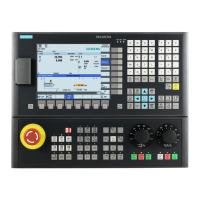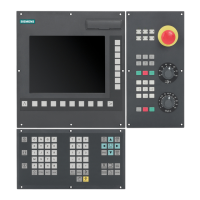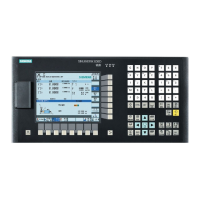K3: Compensations
4.4 Interpolatory compensation
Extended Functions
236 Function Manual, 03/2013, 6FC5397-1BP40-3BA1
Terms
Important terms for "interpolatory compensation" are:
● Compensation value
The difference between the axis position measured by the position actual-value encoder
and the required programmed axis position (= axis position of the ideal machine). The
compensation value is often also referred to as the correction value.
● Basic axis
Axis whose setpoint position or actual position forms the basis for calculating a
compensation value.
● Compensation axis
Axis whose setpoint position or actual position is modified by a compensation value.
● Interpolation point
A position of the basic axis and the corresponding compensation value of the
compensation axis.
● Compensation table
Table of interpolation points and compensation values (see below)
● Compensation relation
Assignment of the basic axis and the corresponding compensation axis and the reference
to the corresponding compensation table.
Compensation tables
Because the mentioned dimensional deviations directly affect the accuracy of workpiece
machining, they must be compensated for by the relevant position-dependent compensation
values. The compensation values are derived from measured error curves and entered in the
control in the form of compensation tables during commissioning. A separate table must be
created for each compensation relation.
Entering compensation tables
The size of the compensation table, i.e. the number of interpolation points, must first be
defined in a machine data. After the next POWER ON, the compensation tables are
generated by the NC and preassigned a value of "0".
The compensation values and additional table parameters are entered in the compensation
tables using special system variables. Data can be loaded in two different ways:
● By starting an NC program with the parameter values.
● By transferring the compensation tables from an external computer to the control.

